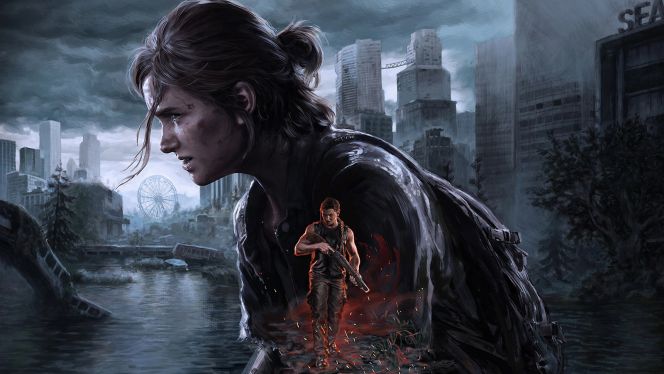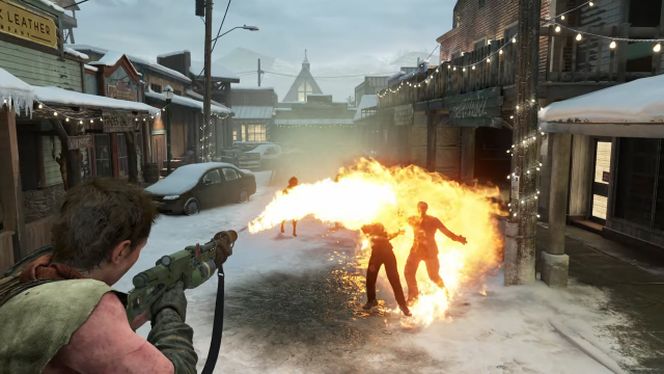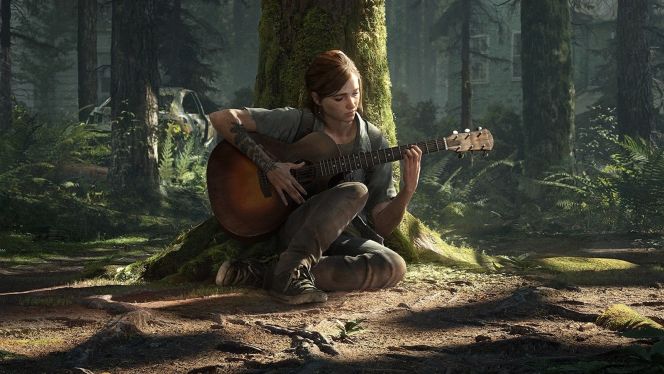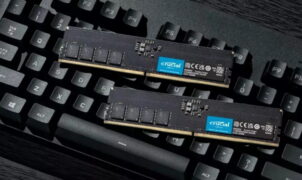REVIEW – With the PC port of the first installment of the franchise in a disgraceful state, Nixxes had the even more important task of getting the second installment of the franchise from PlayStation 5 to PC in at least decent shape. It worked, but it wasn’t a port that could be called perfect. So the overall picture is not entirely positive.
After the first part, Sony couldn’t mess up the second, because a (what they think) blockbuster IP port has to be right.
Back to the post-apocalypse
There are a lot of new features, so in addition to DLSS frame generation, the Nixxes’ typical dynamic resolution scaling can be used in the TLoU2R’s PC port. It’s safe to say up front that it’s another dimension compared to Iron Galaxy’s work on the first game’s port, but it still has to be said: it may be nicer than what we saw on the PlayStation 5, but by very little. The shadows (both screen space and contact) are new compared to what we saw on the console, and with that the image quality is noticeably improved. The price for this is a much higher demand on the graphics card, as evidenced by the fact that the recommended system requirements for 1080p at 60 FPS call for an RTX 3060 on medium settings. However, this results in worse visuals than seen on the original PlayStation 4, seen in 2020. This graphicss card is not enough to maintain 60 FPS, even though the Nvidia GPU on the console has many times the processing power and bandwidth of Sony’s console. As if that wasn’t enough, the CPU is also put to the test, but here it’s improved compared to the first part.
Processor DirectStorage decompression is used in a different compression format, and because of the good optimization it doesn’t use the CPU too much, but it’s still a CPU-intensive game because of how the shaders are compiled. True, in a different way: in the first part it was done in the main menu over a period of minutes, here a small part of it is done at the first boot, and the rest is done asynchronously as the world is streamed. As you walk around, the relevant shaders are precompiled before materials and objects become visible, and it takes less CPU threads to do so, but in-game you can suddenly experience high CPU usage when you cross certain invisible boundaries. This also affects frame timing. Loading is very CPU intensive, which is surprisingly bad considering the clock speed of the PS4’s processor and the fact that it uses a 5400 RPM hard drive by default. You always experience this strange loading when you first enter a new area. Even if you have a relatively modern processor, you will experience performance fluctuations on most of them. Even on the most powerful processors, you’ll notice that the frame rate simply freezes. This isn’t a game designed for the future (Indiana Jones and the Great Circle is a bit like that), so it’s a bit frustrating.
Steam Deck is not great either
If you tried to run TLoU2R on a Valve handheld PC, you would experience a very annoying situation. The game would run most of the time, then whoops, it would suddenly stop, then continue. This is simply an annoying and headache-inducing experience. Even with the Steam Deck performance profile, it’s very difficult to get a steady 30 FPS, and then the camera movement is jost annoying, ruining the experience and atmosphere. AMD’s most powerful CPUs can’t perform as well as you’d expect because they don’t fully utilize this port. For this reason, it is highly recommended that you turn on frame rate limiting.
If you get a stable 60 FPS, you’re mostly good, except for data streaming and shader compilation issues. Having a VRR-enabled display doesn’t help either, because it’s not sophisticated, and it’s recommended to turn off frame rate limiting (without it, the camera moves even worse). In return, loading times increase (up to four times). There’s also a lot of flickering (especially when blood is splattered on the ground), shadows are sometimes loaded too close (while on a console they’re visible from a distance), and the upscaling is surprisingly bad. The DLAA is ghosting on particles and vegetation, and the new Transformer model solution should be used on the DLSS if possible. So somehow the TLoU2R PC conversion shows surprisingly bad results in this area, and the overall picture is not so perfect.
Correct port, but no more
It should be noted that the following review is not about the game itself (the PlayStation 5 version has been discussed throughly before), but about the quality of the port. Not bad, but it could have been better. It feels buggy, has huge GPU requirements, and bloats the processor with loads of stuff. They will be able to fix some of this, but the Nixxes will have their work cut out for them. Even a high-end configurator will stumble a bit with the port, but there will be some annoyance with the extravagant style of frame timings. The port is better than what the first part initially showed, but far from perfect.
-V-
Pros:
+ Slightly better than what we saw on PlayStation 5
+ Can be configured in detail
+ Shaders won’t keep us in the main menu for minutes
Cons:
– Very high GPU requirements
– Often loads the processor
– Many minor, annoying bugs
Publisher: PlayStation Publishing LLC
Developer: Naughty Dog/Nixxes
Style: Action-Adventure
Release Date: April 3, 2025
The Last of Us Part 2 Remastered (PC)
PC development - 7.5
PC graphics - 8.2
Plus effects - 6.5
Steam Deck compatibility - 7.5
Bug-free - 7.2
7.4
GOOD
Everyone will find something annoying in it, but at least it's not completely unplayable.

















Leave a Reply